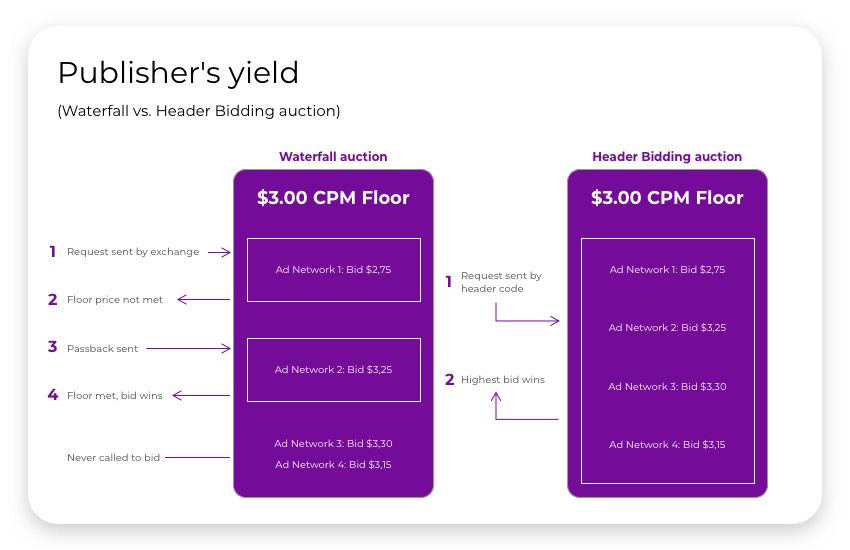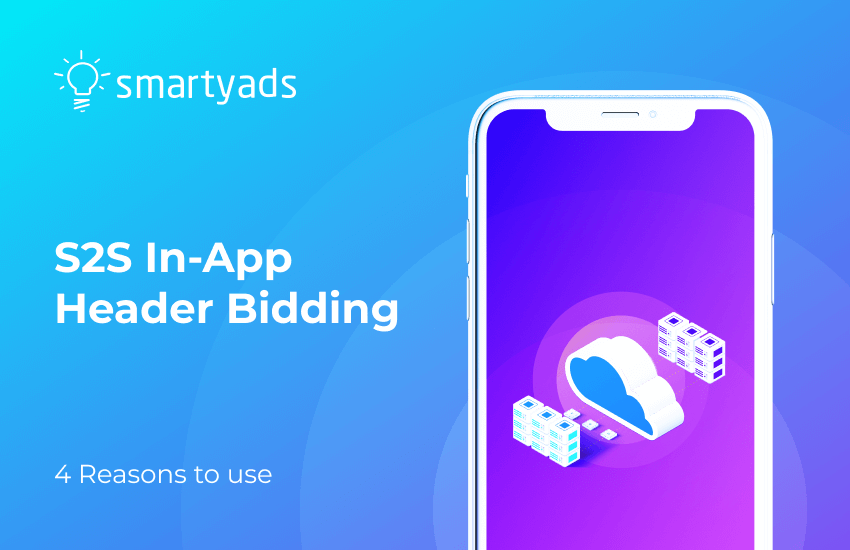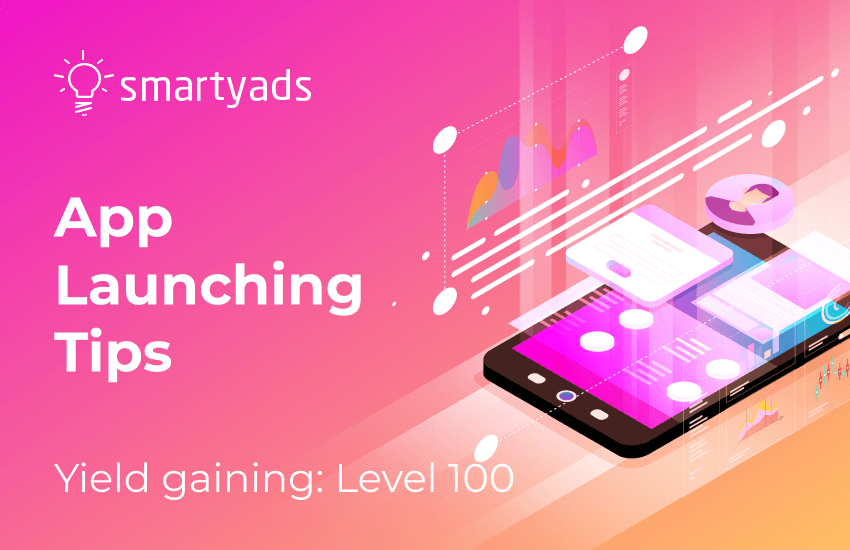A lot of app developers and publishers are excited about the future, and there is a good reason for it. According to eMarketer, mobile ad spend will outperform traditional media by 2020 and make 43% of all media spending. If this stat does not get you excited about potential opportunities, then perhaps the following information will do the trick. In another eMarketer study, 90% of the digital ad spend will be conducted programmatically and most if it will go to advanced purchasing models like PMPs. Since 2020 is not that far away, you will need to make sure that your business is aligned with trends. This is where you will need server to server (S2S) in-app header bidding.

What is S2S In-app Header Bidding?
Previously, with the client-side header bidding publishers needed to decide which one they were willing to sacrifice: monetization or user experience. If they were to add more partners, this would boost monetization, but increase latency. This is because the SSP connections run from the browser to the SSP. Therefore the user ID cookies of the SSP are included in the request. With the server to the server system, there is no need for the browser to send those cookies since the bidding server and the SSP have different domains. Since the connections are server to server, adding additional partners will not decrease the speed of the browser because servers will handle them all. As a result, the pages will be loading faster that will lead to an increased ad viewability and conversion.

How Does In-app Header Bidding S2S Work?
S2S is when a browser establishes a connection to the header bidding server, which then proceeds to make connections to other SSPs the publisher is currently working with. After receiving the bids, it returns them to the browser. Due to its many benefits, this method has managed to gain broad recognition.
Shifting From Waterfall: Opportunities
Waterfall bidding and ad network mediation disadvantages will push the market to broader adoption of the server to server app header bidding. We saw something similar with desktop publishers. When header-bidding reached its peak four years ago, the brand spend shifted in favor of programmatic advertising.
If publishers and app developers are looking to increase the bid density, they will need to include extra SDKs which will result in increasing the size of the files inside the app and will drain the resources of mobile devices. Unless they use header-bidding solution that maximizes the number of demand partners bidding for inventory at the same time.
A waterfall auction is when a publisher passes their inventory from one ad network to another one in descending order of importance until all of the impressions are sold. The rankings usually depend on the ad network’s historical yield for the publisher. In other words, an ad network that previously sold premium inventory gets the first opportunity to receive new impressions from the publisher. However, header bidding is a much smarter way publishers can maximize their revenue.

Benefits of Server to Server in App Header Bidding
In addition to being able to get real-time pricing, there are many other advantages for app developers.
Get more brand spending dollars - Most brands out there know that with mobile apps they can reach more customers, but they need PMPs to ensure brand safety. Using in-app header bidding, app developers will have access to the PMP ecosystem so they can plug into demands of SSPs preferred partnership deals.
Focus on SDKs - Managing SDKs and the revenue from app downloads is something that an increased amount of developers will be focused on since the latest is expected to grow 65% by 2020. Since brands are constantly looking for ways to reach customers through mobile apps, this opens a lot of doors for developers to get more incremental revenue.
Increased competition without the latency - In the past, adding header bidding partners was risky due to the increase of page loading time which is detrimental to the user experience. By shifting the ad call to each partner from the browser to an offline server, it is possible to mitigate this risk, thus allowing publishers to include as many partners as they wish without affecting the load time.
A trusted path to inventory - Buyers are always looking for assurances that what they bid on is authentic. The dream is to have their own code on the header, but this is only possible on the publishers’ side. In the server to the server system, there is a clear path to the inventory and this assurance is enough to be sure you get human-viewable impressions.
Future of S2S In-app Header Bidding
It is safe to say that S2S is the future of programmatic. The developers that continue to take advantage of the monetization strategies that are available today will receive all of the benefits that were mentioned above. Those who do not keep up will fade away into obscurity. S2S in-app header bidding will continue to become mainstream since it is a win-win for everybody involved and those who do not adjust will fall behind not only technologically but also in terms of money.
SmartyAds has all of the tools you need to efficiently conduct pre-bid auctions. Publishers can offer their inventory to all of the interested parties involved simultaneously which enables them to have equal chances to win impressions. By casting their nets as wide as possible, publishers can significantly increase the competition on a per-impression basis, which will drive inventory value higher and the yield as a result.
SmartyAds has s2s in-app header bidding solutions for invitation-only RTB auctions that can be implemented both server-side or client-side. Contact us to learn more!




![In-App Advertising: the Complete Guide [Updated 2025]](/storage/uploads/2020/september/in-app-advertising-trends.png)
